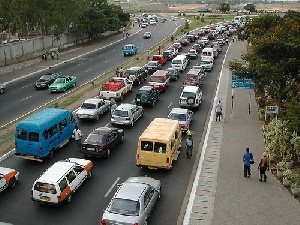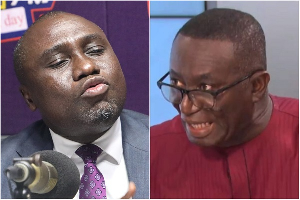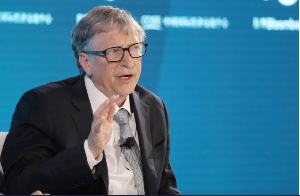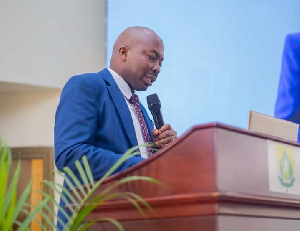The President, His Excellency Prof. John Evans Atta Mills, is reported to have been appalled recently by the traffic situation in Accra, describing the traffic congestion on the roads as a “major headache” when he inspected the on-going highway construction near the Kotoka International Airport in Accra.
The traffic congestion in Accra is a daily occurrence in many cities throughout the world especially during the morning and evening peak hours, which are normally between 0730 – 0930hrs and 1630 – 1830hrs respectively. The traffic congestion is usually caused by the inability of the capacity of the road network to cope with the volume of vehicular traffic using it. The other causes include road closures, road works and traffic accidents, which reduce the effective width of the carriageway and have short term effect on the road network. Congestion of the network is both economically inefficient in terms of the cost in billions of cedis to businesses in service provision and environmentally unacceptable because of pollution, severance and noise and the effect on the health and wellbeing of the public. Obviously, we will need more inter-urban roads to improve accessibility, connectivity and development but the desire to build the roads simply to meet the demand for the use of motor vehicles is unlikely to solve the effects of congestion and other traffic problems in the long term as more vehicles transfer to the newly build roads because of unrestricted demand for travel by car. In fact, the alternative highway capacity is likely to be ‘choked’ and the benefits offset unless the growth in traffic volume is restrained.
We urgently need to plan and implement measures for the effective management of traffic demand, so that the current congestion problems can be reduced both in the short and long terms. During the planning of the measures, we should bearing in mind the need for ‘sustainability’ i.e. ‘the ability to manage developments and transport in such a way that meets the needs of today without compromising the ability of future generations to meet their needs’ (UN, 1987). Our children’s’ children have the right to healthy lifestyle without respiratory diseases and other environmental hazards, which are caused by harmful CO2, NOX and other particulate emission from motor vehicles and as such we must take the traffic congestion problems very serious.
I have briefly described below, without using technical jargons, some of the possible traffic demand management measures, which our policy and decision makers can consider: (a) ROAD USER CHARGING – a term, which is usually used for direct charging of the use of roads in urban areas. The economic rationale for congestion charging and road tolls is that users of motor vehicles do not perceive the true cost of using their vehicles either at the point of use or at the time they make the decision to travel. The true cost being the personal cost the traveller incurs (vehicle running cost, fuel, parking etc.) and the social costs which the traveller imposes on the community by adding to congestion and increasing the potential for accidents as well as the adverse impacts on the environment, through creating noise, atmospheric pollution and contributing to severance. (b) PHYSICAL TRAFFIC MANAGEMENT MEASURES - these measures include the efficient use of road space (i.e. the provision of High Occupancy Vehicle facilities for the use by vehicles carrying one or more passengers), junction control and bottleneck improvements. (c) LAND USE PLANNING - the use of planning policies to control the location of developments, which generate high volumes of traffic and their impact on the road network. (d) PARKING CONTROL AND PRICING - the measures target the attractiveness for the driver’s destination of the journey made for whatever purpose and they include parking control imposed by removing existing road space or restriction on provision of new space, regulatory control imposed by confining parking to selected locations and by allocating space for designated users, control the time when a parking space is available and the duration of stay and control the use of parking meters and other systems for imposing restraint by price. (e) SUSTAINABLE TRANSPORT IMPROVEMENT - there is the urgent need to introduce mass transit form of transport in most cities to improve the general transportation of the public. These types of public transport should be integrated to make journeys seamless. Employers can be encouraged to provide mass transport for staff as well the general introduction of pool cars for business use during the working day. Parents who live within a catchment area can share cars or hire mini-buses to take their children to and from school. It may be noted that the combination of the public transport with traffic restraint is likely to improve the local economy by offsetting the effect of introducing traffic restraint alone. Walking and cycling improves our health so road space can be provided to encourage their usage as an alternative mode of transport in its own right to the use of cars for shorter journeys. Secure parking and changing facilities can also be provided as incentives at workplaces to encourage their usage. (f) TRANSPORT TELEMATICS AND TELECOMMUTING - the introduction of Intelligent Transport Systems on the road network will help journey speed to be controlled, planning of the journeys as well as warning motorists to avoid congested roads and trouble hot spots. With the advent of computers and broadband, workers can be encouraged to have video conferencing as well as working from home to reduce the need to travel by car for meetings and other business trips. Travel awareness campaigns can also be started to influence driver’s travel pattern and behaviour. Below are the other measures, which can be considered although they are ineffective: (g) TAXES ON FUEL - the rationale is to increase the generalised cost of car use closer to the point of use by increasing the price of fuel through taxation. It is ineffective because of the offset of operating cost by fuel efficiency and smaller engine cars as well as the price of commodities to be transported. (h) VEHICLE OWNERSHIP AND USAGE - households can be restricted in the number of cars owned and the use of such vehicles regulated e.g. vehicles with even numbered-plates and those with the odd numbered-plates being allowed to be used on different days. The difficulties with these measures are that they can be violated easily and they do not necessarily affect those journeys that contribute to congestion or which are regarded as unnecessary. They also do not provide alternatives for those who are affected.
Having looked at the options, pilot schemes, which cover a combination of the measures indicated above, can be planned, implemented and the effect carefully monitored in a small city or a suburb of big city before rolling it out to the bigger cities.
The President is also quoted as saying “Our problem in Accra is the traffic congestion, it’s not good, and we have to find ways of making it possible for traffic to move. This is obviously part of the solution, and I will encourage that we find, those of you who have the expertise in this, how we can ease traffic congestion in Accra, it’s a major headache.”
When I read the news item, I went to the websites of the Ministry of Transport and Ministry of Roads and Highways to look for the current 10-year comprehensive National Transport Strategy (NTS) which outlines, among other things, 'the problem identification', 'what we are going to do', 'how we are going to do it', 'targets' and 'benefits' etc. Unfortunately I did not find the NTS. I am sure such a document may exist and if this is the case, then it must be uploaded on the website of the Ministries so that the underpinning policies of the vision for the transportation can be clearly understood. However, if the NTS is not available then as a first step in addressing the chronic traffic congestion in Accra and the other cities, this document and other supplementary strategic documents must be prepared as a matter of urgency.
It is the view of the author that this article will kick start the discussions at home, workplaces and the media on how everyone who lives, works and passes through the cities can contribute to solving the chronic traffic congestion problems. I have the expertise and willing to help to devise policies and strategies to ease the traffic congestion problems and other network issues if invited.
Author’s name: Mese Hmm
E-mail: (kweku@amoasi.fsnet.co.uk)
Opinions of Tuesday, 18 October 2011
Columnist: Mese Hmm















